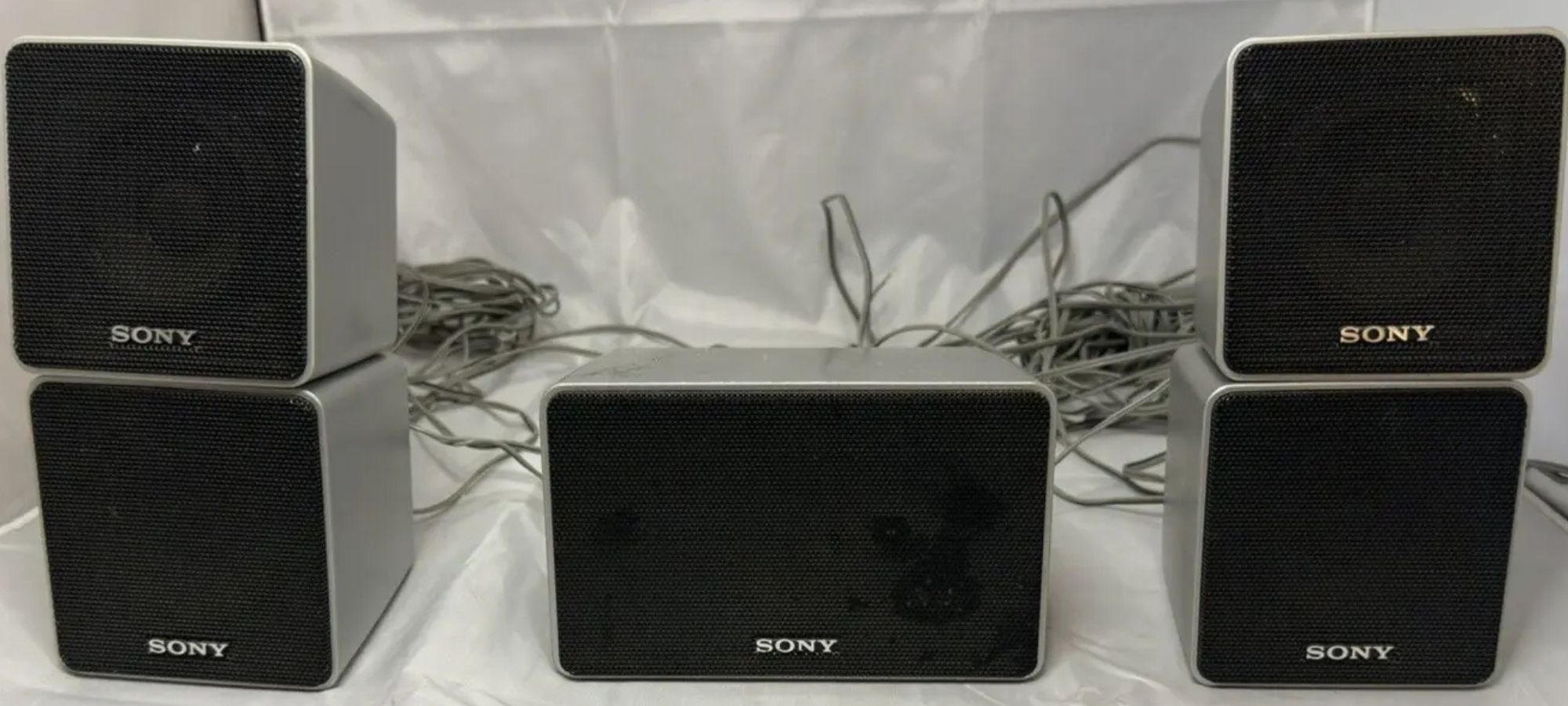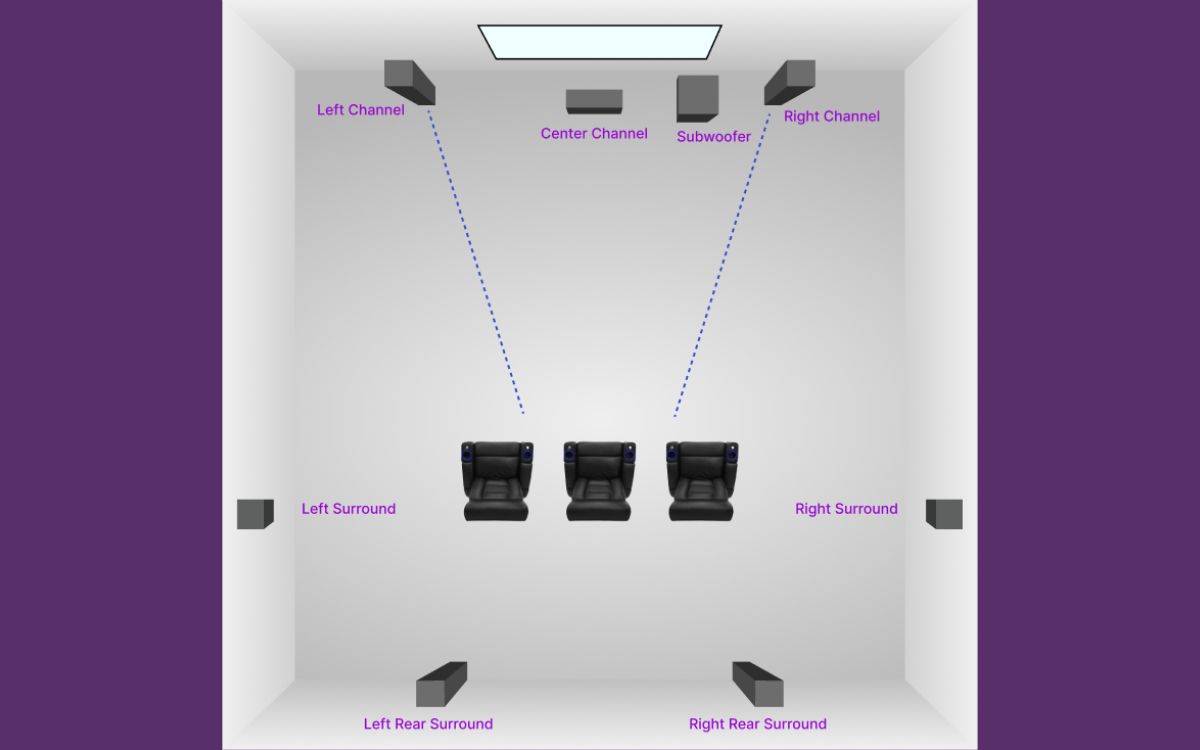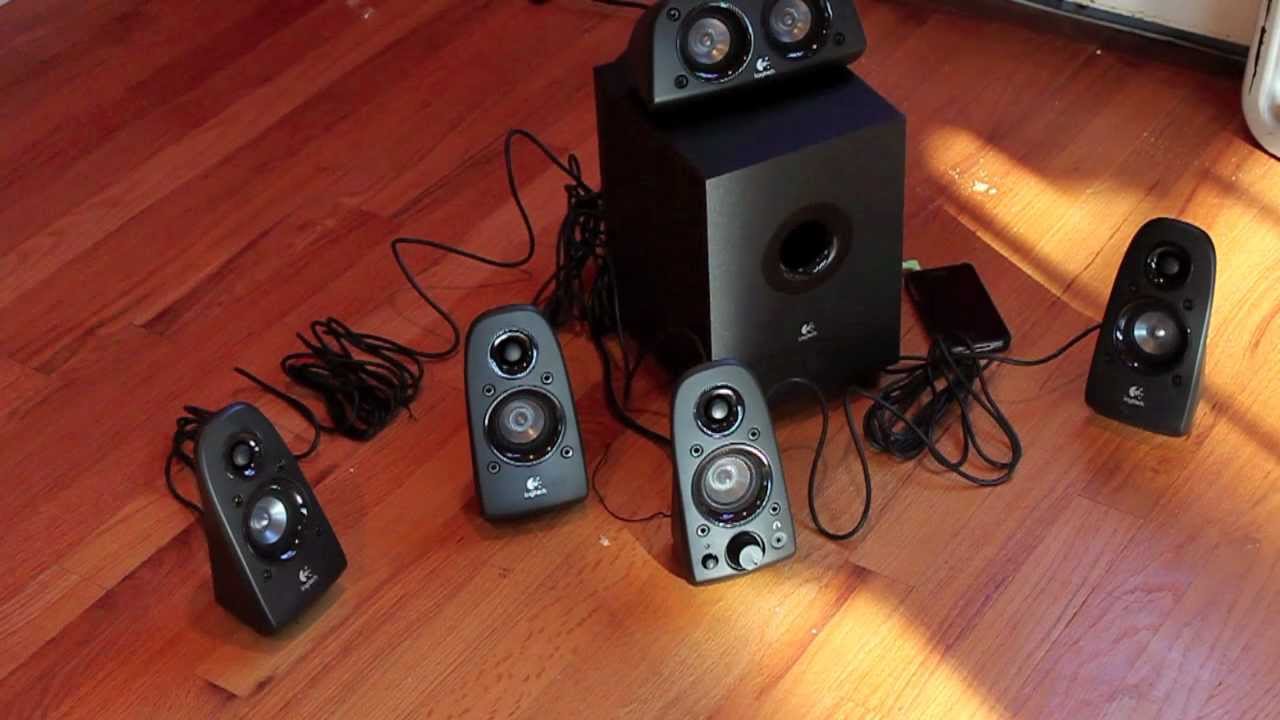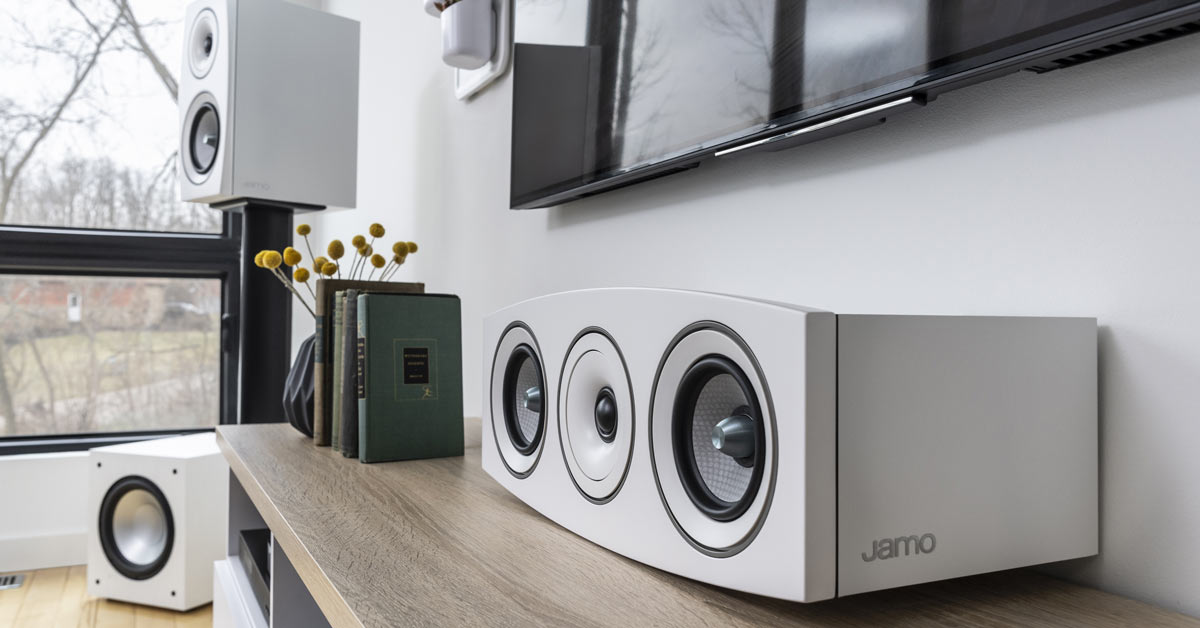Home>Production & Technology>Surround Sound>How High Can I Position Surround Sound Speakers
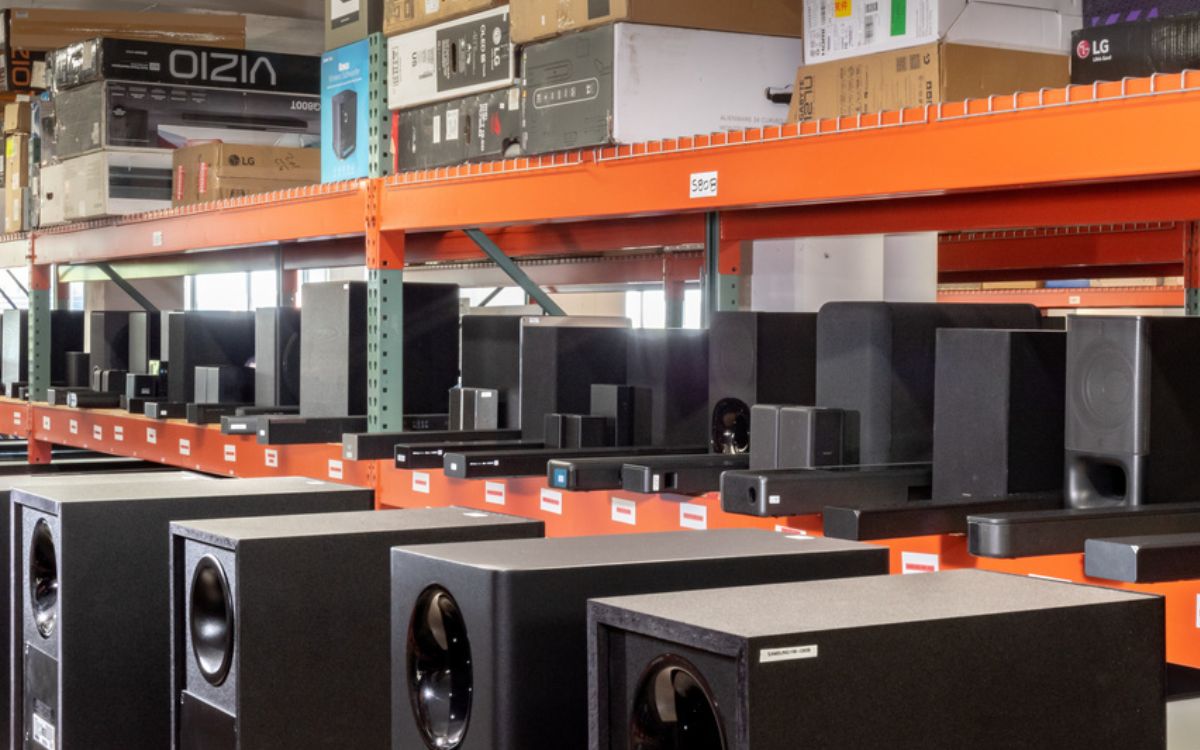

Surround Sound
How High Can I Position Surround Sound Speakers
Modified: January 22, 2024
Discover how high you can position your surround sound speakers for optimal audio immersion and enjoy a truly immersive home theater experience.
(Many of the links in this article redirect to a specific reviewed product. Your purchase of these products through affiliate links helps to generate commission for AudioLover.com, at no extra cost. Learn more)
Table of Contents
Introduction
Welcome to the world of surround sound, where audio immersion takes center stage and elevates your entertainment experience to new heights. Whether you’re a movie buff or a gaming enthusiast, a well-positioned surround sound system can transport you to the heart of the action, making you feel as if you’re right in the middle of the scene.
One crucial aspect of setting up a surround sound system is the positioning of the speakers. Each speaker has a specific role in reproducing audio, and proper placement ensures that you get the optimal sound experience.
In this article, we’ll delve into the factors to consider when positioning surround sound speakers, discuss the optimal height for different speakers, provide placement recommendations for Dolby Atmos systems, and highlight common mistakes to avoid. By the end, you’ll be equipped with the knowledge to optimize your surround sound setup and bring your audio to life.
So, let’s dive into the world of surround sound and explore how to position your speakers for an immersive auditory adventure.
Factors to Consider When Positioning Surround Sound Speakers
When it comes to positioning your surround sound speakers, there are several factors to take into consideration. Let’s explore these factors to ensure you create the best possible audio experience in your home.
- Room Size and Layout: The size and layout of your room play a crucial role in determining where to position your speakers. Larger rooms may require more speakers or different placement strategies to achieve balanced sound distribution.
- Listening Position: Consider the primary listening position in your room. This will help you determine the direction and angles at which the speakers should be placed to ensure optimal sound delivery to your ears.
- Surround Sound System Configuration: The type of surround sound system you have will also influence speaker placement. Common configurations include 5.1, 7.1, and Dolby Atmos setups, each requiring specific speaker positioning for optimal performance.
- Speaker Specifications: Pay attention to the specifications of your speakers, including their frequency response, dispersion characteristics, and recommended placement guidelines provided by the manufacturer. These specifications can guide you in determining the best positioning for each speaker.
- Acoustic Treatment: Consider the acoustic properties of your room. Factors such as reflective surfaces, furniture placement, and sound-absorbing materials can affect the sound quality. It may be necessary to make adjustments or add acoustic treatments to optimize the sound reproduction.
By taking these factors into account, you can ensure that your speaker placement is tailored to your specific room and audio system, allowing for an immersive and balanced surround sound experience.
Optimal Height for Front Speakers
The front speakers in your surround sound system play a critical role in delivering clear and accurate audio for your movies, music, and games. Properly positioning these speakers can significantly enhance your listening experience. Here are some guidelines for the optimal height placement of front speakers:
1. Ear Level Placement: Ideally, the front speakers should be positioned at ear level when you are seated in your primary listening position. This ensures that the sound travels directly to your ears without obstruction, resulting in a more immersive and natural sound experience. You can achieve this by placing the speakers on stands or mounting them at the appropriate height on the wall.
2. Horizontal Alignment: The front speakers should be aligned horizontally with the center of your screen or TV. This allows for better synchronization between audio and video, creating a cohesive and realistic audiovisual experience.
3. Stereo Imaging: To achieve optimal stereo imaging and spaciousness, position the front speakers equidistant from each other and the listener. This helps create a wider soundstage and enhances the separation of audio elements, making you feel like you’re in the midst of the action.
4. Consider Speaker Design: Different speaker designs may have specific recommendations for optimal height placement. For example, floor-standing speakers are typically placed on the floor at ear level, while bookshelf speakers may be elevated on stands to achieve the desired height.
5. Room Acoustics: Take into account the acoustic properties of your room. The placement of front speakers near walls or corners can affect the sound quality due to reflections and standing waves. Experimentation with placement and the use of acoustic treatments can help optimize the audio performance of your front speakers.
By following these guidelines, you can ensure that your front speakers deliver the best possible audio performance, immersing you in a captivating sonic experience.
Optimal Height for Rear Speakers
Rear speakers are an essential component of your surround sound system, responsible for creating an immersive audio environment by introducing sound effects and ambient sounds from behind the listener. Proper placement of rear speakers ensures a seamless surround sound experience. Here are some guidelines for achieving optimal height for rear speakers:
1. Position Above Ear Level: Unlike front speakers, rear speakers are typically positioned slightly above ear level to create a sense of overhead and surround sound. Placing them higher helps to simulate sounds coming from behind the listener, enhancing the overall immersion. Mounting rear speakers on the wall at a suitable height or using speaker stands can achieve the desired positioning.
2. Angle Towards the Listening Position: Aim the rear speakers towards the primary listening position to direct the sound towards your ears. This ensures that the audio is properly balanced and accurate, enhancing the surround sound experience.
3. Equal Distance from the Listening Position: For optimal sound distribution, position the rear speakers at equal distances from the listening position. This symmetry helps in creating a cohesive and immersive sound field, enveloping you in a surround sound bubble.
4. Consider Speaker Design: Different speaker designs may have specific recommendations for optimal height placement. Some rear speakers may have built-in tilt or swivel options that allow for precise aiming towards the listener. Be sure to check the manufacturer’s recommendations for your specific speakers.
5. Experiment and Fine-tune: Room acoustics and personal preferences may vary, so don’t be afraid to experiment with the placement of your rear speakers. Try adjusting the height and angle to find the optimal position that best suits your room and listening setup.
Remember, the goal is to create a seamless and enveloping surround sound experience, allowing you to feel fully immersed in the audio environment. By following these guidelines, you can achieve the optimal height positioning for your rear speakers and unlock the full potential of your surround sound system.
Optimal Height for Center Speaker
The center speaker is a crucial component of a surround sound system, responsible for delivering clear and intelligible dialogue in movies, TV shows, and games. Proper placement of the center speaker ensures that dialogue is accurately localized and well-balanced. Here are some guidelines for achieving the optimal height for your center speaker:
1. Position at Ear Level: The center speaker should ideally be positioned at ear level when you are seated in your primary listening position. This ensures that dialogue is projected directly towards your ears, resulting in clear and natural sound reproduction. You can achieve this by placing the center speaker on a stand or shelf that allows for elevation to the appropriate height.
2. Align with Display: It is important to align the center speaker with the display, such as the TV or projection screen. This ensures that the dialogue appears to be coming from the on-screen characters, creating a realistic soundstage. If the display is wall-mounted, consider mounting the center speaker either above or below it, maintaining proper alignment.
3. Maintain Symmetry: To achieve balanced sound distribution, position the center speaker symmetrically with respect to the left and right front speakers. This helps in creating a cohesive sound field, where dialogue seamlessly transitions between the front speakers and appears to emanate from the center of the screen.
4. Consider Acoustic Characteristics: Take into account the acoustic properties of your room. If your center speaker is placed too close to a wall or corner, it may result in excessive bass or reflections, impacting the clarity of dialogue. Experiment with placement and consider using acoustic treatments to mitigate any issues and optimize the sound quality.
5. Speaker Placement Options: Depending on your setup and available space, you can position the center speaker either directly below the display, on top of a TV stand or media console, or mount it on the wall using a dedicated center speaker bracket. Choose the option that best suits your room layout and aesthetic preferences.
By following these guidelines, you can position your center speaker at the optimal height, ensuring that dialogue is clear, intelligible, and seamlessly integrated with the on-screen action. This will enhance your overall listening experience and bring the dialogue to life.
Placement Recommendations for Dolby Atmos Systems
Dolby Atmos is an advanced audio technology that brings a new level of immersion to the surround sound experience by adding height to the audio field. This three-dimensional audio format requires specific speaker placement to fully realize its potential. Here are some placement recommendations for Dolby Atmos systems:
1. Overhead Speakers: Dolby Atmos systems utilize overhead speakers or ceiling-mounted speakers to create a sense of height and dimension in the audio. These speakers are crucial for delivering the immersive sound effects and overhead audio cues. Ideally, they should be positioned directly above the primary listening area to provide a realistic and enveloping sound experience.
2. Add-On Speaker Modules: If ceiling-mounted speakers are not feasible, Dolby Atmos-enabled speaker modules can be used as an alternative. These modules are designed to sit on top of your existing front or rear speakers and project sound upwards to reflect off the ceiling and create the illusion of overhead audio. Follow the manufacturer’s guidelines for optimal placement of these modules.
3. Surround Speakers: In addition to overhead speakers, Dolby Atmos systems still make use of traditional surround speakers. These speakers should be positioned at ear level, just like in a standard surround sound setup, to provide the lateral and rear surround effects. Place them at equal distances from the primary listening position for an immersive soundstage.
4. Center Speaker and Subwoofer: The center speaker and subwoofer placement in a Dolby Atmos system follows the same guidelines as mentioned earlier. The center speaker should be positioned at ear level and aligned with the display, while the subwoofer can be placed anywhere in the room to generate low-frequency effects.
5. Optimal Speaker Layout: Dolby Atmos supports different speaker configurations, including 5.1.2, 7.1.2, 5.1.4, and 7.1.4 setups, depending on the number of overhead or add-on speaker modules used. Consider the layout of your room and the specific Dolby Atmos configuration you wish to use to determine the best placement for each speaker.
It’s important to note that Dolby Atmos systems often require additional setup and calibration to ensure proper speaker alignment and optimization for room acoustics. Follow the guidelines provided by Dolby or consult a professional installer to achieve the best possible audio performance from your Dolby Atmos system.
Common Mistakes to Avoid When Positioning Surround Sound Speakers
Properly positioning surround sound speakers is crucial for achieving optimal audio performance and creating an immersive sound experience. However, there are common mistakes that many people make when setting up their surround sound systems. Here are some mistakes to avoid:
1. Improper Speaker Height: One of the most common mistakes is placing speakers at the wrong height. Front speakers should be positioned at ear level, while rear speakers should be slightly above ear level for a surround effect. Avoid placing speakers too high or too low, as it can negatively impact the sound quality and localization of audio cues.
2. Ignoring Room Acoustics: Neglecting the acoustic properties of your room can lead to suboptimal sound quality. Excessive echo, reflections, or standing waves can distort the sound and impact the overall audio experience. Use acoustic treatments, such as wall panels or sound diffusers, to mitigate these acoustic issues and improve sound clarity.
3. Mismatched Speaker Placement: Ensure that all speakers in your surround sound system are properly aligned. Mismatched speaker positions can result in an imbalanced soundstage, where certain sounds may appear louder or less defined. Aim for symmetry and alignment between the left, center, and right speakers for a cohesive audio experience.
4. Neglecting Speaker Calibration: Many people neglect the importance of calibrating their surround sound systems. Proper calibration involves setting speaker levels, distances, and delays to optimize the audio performance based on the room acoustics. Take advantage of automatic speaker calibration tools or manual adjustment options to achieve the best sound balance and imaging.
5. Placing Speakers in Obstructed Locations: Avoid placing speakers behind furniture, curtains, or other obstacles that can block or interfere with sound dispersion. Allow speakers to have clear paths to the listening area for unobstructed sound projection and improved audio clarity.
6. Breaching Safe Distance: It’s important to maintain a safe distance between the speakers and the listener. Sitting too close to speakers, especially powerful subwoofers, can result in excessive volume or distortion. Follow the manufacturer’s guidelines and consider the recommended safe listening distance for your speakers.
By avoiding these common mistakes, you can enhance your surround sound experience and enjoy audio that is well-balanced, immersive, and true to the intended sound design of movies, music, and games.
Conclusion
Properly positioning surround sound speakers is essential for creating an immersive and captivating audio experience. Whether you’re watching a movie, playing video games, or enjoying your favorite music, optimizing the placement of your speakers can greatly enhance your overall enjoyment and immersion in the content.
Throughout this article, we’ve explored the factors to consider when positioning surround sound speakers, including room size and layout, listening position, system configuration, speaker specifications, and room acoustics. By taking these factors into account, you can tailor the placement of your speakers to your specific room and audio system, ensuring optimal sound distribution and clarity.
We’ve also discussed the optimal height placement for front, rear, and center speakers, highlighting the importance of aligning the speakers with ear level, considering stereo imaging and symmetrical placement, and accounting for the unique characteristics of each speaker type.
In addition, we provided placement recommendations for Dolby Atmos systems, which introduce a new level of immersion with overhead speakers or add-on modules for creating a three-dimensional audio experience. By following the guidelines for Dolby Atmos placement, you can maximize the effects of height and dimension in your surround sound setup.
Lastly, we highlighted common mistakes to avoid, such as improper speaker height, neglecting room acoustics, mismatched speaker placement, failing to calibrate the system, placing speakers in obstructed locations, and breaching safe listening distances. By being mindful of these mistakes, you can ensure that your surround sound setup delivers the best possible audio performance.
In conclusion, positioning surround sound speakers correctly is crucial to unlocking the full potential of your audio system. By carefully considering the factors discussed in this article and following the recommended guidelines, you can create an immersive and enveloping sound experience that brings your entertainment to life.


